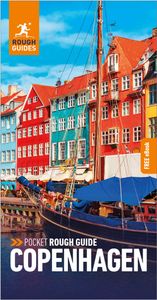Discover Saksun
Saksun is one of the prettiest spots on Streymoy, the largest island. It’s a small settlement beside a steep-sided inlet, while over on Esturoy to the east, winding roads take you up into the mountainous north and up to the highest peak, Slættaratindur (882m). Not far from here, you can see two rock stacks, known as Risin og Kellingin (the giant and the witch) and the picturesque village of Gjógv, named after a gorge.
Visit one of the smaller islands
Visiting one of the smaller islands, such as the remarkable Stóra Dímun, is as remote as it gets. This 2-sq-km inaccessible island is inhabited by seven people who live in a farmhouse perched on a plateau surrounded by vertical sea cliffs.
The only access is via a helicopter service that delivers supplies three times a week. Tourists can come here on boat trips or stay on the island for a few days in summer when the schoolhouse doubles as a self-catering apartment.
What outdoor activities can I do?
It’s possible to do almost any outdoor activity here, from horseriding, trail-running and climbing to sea kayaking, sailing and fly-fishing for wild salmon.
If you’ve got thighs of steel, you’ll enjoy cycling the quiet mountain roads. But those who prefer a gentler pace would be better off hiking.
There are many options for day walks: climb to the top of Slættaratindur for stunning views over the archipelago; take the postman’s path up over the steep ridge from Bøur to Gásadalur waterfall (which once was the only way to reach Gásadalur village before a tunnel was built). Alternatively, you can hike from Tórshavn to Kirkjubøur to see the oldest church in the Faroe Islands.























